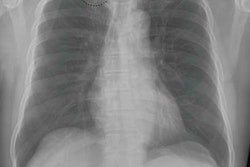The team led by Jaydev Dave, PhD, an associate professor of radiology at Thomas Jefferson University, collected data on radiation dose for routine procedures to ensure the facility maintained safe levels for patients.
All fluoroscopy procedures were performed on one of 14 available mobile C-arms at the facility or in an R/F suite between July 2017 and June 2018. The mobile C-arms were used for surgery, orthopedics, pain management, gastroenterology, and urology procedures, among others. The researchers recorded cumulative air kerma (CAK) values, which measure effective radiation dose.
Dave and colleagues reviewed more than 1,100 cases that included patients with a mean age of 53.9 (± 17.9) years and a body mass index of 28.4 (± 6.7).
For the 549 surgical procedures performed in the operating room, patients received a mean CAK value of 36.8 (± 79.6) mGy. Mean CAK values were highest for gastroenterology procedures, at 65.2 (± 90.2) mGy, followed by 46.3 (± 84.0) mGy for pain management procedures performed in the neurosurgery department and 16.1 (± 14.6) mGy for urology procedures.
While the results were well within dose compliance standards, Dave and colleagues questioned whether monitoring low radiation dose values is an optimal use of healthcare resources. They suggested evidence-based exemptions should be granted from the requirement of tracking fluoroscopy radiation levels for such low-dose procedures.



















